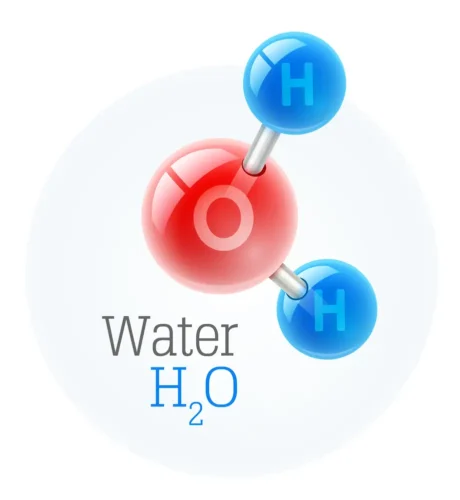Chemical Compound

Table of Contents
What are Chemical Compounds?
A chemical compound is a substance of two or more elements bonded together in specific proportions. These compounds have unique properties that differ from those of the individual elements that make them up.
For example, water (H2O) is a chemical compound composed of hydrogen (H) and oxygen (O) in a fixed ratio of two hydrogen atoms to one oxygen atom. Water has distinct properties, such as its ability to dissolve many substances, its high boiling and melting points compared to its constituent elements, and its role as a universal solvent in many biological and chemical processes.
Chemical Compounds Explained
Composition
Chemical compounds result from atoms from different elements joining together through chemical bonding. These bonds can be strong, like covalent bonds found in molecular compounds or ionic bonds found in ionic compounds. Covalent bonds involve atoms sharing electrons, while ionic bonds involve the transfer of electrons between atoms.
The composition of a compound is shown by its chemical formula, which tells us the types and amounts of atoms or ions in the compound. For instance, the formula H2O represents water, where two hydrogen atoms (H) are bonded to one oxygen atom (O) through covalent bonds. In contrast, NaCl formula represents sodium chloride, where sodium (Na) and chlorine (Cl) ions are bonded together through ionic bonds.
Properties
Chemical compounds possess unique properties that differ from those of their elements. These properties can be categorized into physical properties, such as melting and boiling points, solubility, and density, and chemical properties, such as reactivity, acidity or basicity, and stability.
The physical properties of a compound are influenced by factors like the types of chemical bonds present (such as covalent, ionic, or metallic bonds), the arrangement of atoms or ions in the compound, and the strength of intermolecular forces. For instance, a compound’s melting and boiling points are affected by the strength of bonds between its particles.
On the other hand, chemical properties are related to how a compound interacts with other substances in chemical reactions. This includes its reactivity with acids, bases, and other compounds and its ability to transform oxidation or reduction. A compound’s stability is also an important chemical property, indicating how likely it is to decompose or react under specific conditions.
Naming
Compounds are named using systematic rules and nomenclature systems that reflect their composition and bonding characteristics. Molecular compounds, which are made of nonmetal atoms bonded together through covalent bonds, are named using prefixes to indicate the number of atoms of each element present in the molecule. For instance, carbon dioxide (CO2) indicates one carbon atom and two oxygen atoms in the molecule.
On the other hand, ionic compounds, formed by the bonding of positively charged cations and negatively charged anions, are named using the names of the ions involved. The name of the cation (positively charged ion) comes first, followed by the name of the anion (negatively charged ion). For example, sodium chloride (NaCl) consists of sodium ions (Na+) and chloride ions (Cl-).
Uses
Chemical compounds play a crucial role in numerous industries and applications, showcasing their versatility and importance in modern society.
Pharmaceuticals: Chemical compounds are essential in developing and producing pharmaceuticals, including medications and drugs. They are used to create active pharmaceutical ingredients (APIs) that treat various medical conditions and improve human health.
Agriculture: Chemical compounds are used in agriculture as fertilizers to enhance soil fertility and promote plant growth. They are also used as pesticides and herbicides to protect crops from pests, diseases, and weeds, ensuring higher yields and improved crop quality.
Materials Science: Chemical compounds are fundamental for designing and producing new materials with specific properties. They are used to manufacture polymers, plastics, ceramics, composites, and other advanced materials used in the construction, automotive, aerospace, and consumer goods industries.
Electronics: Chemical compounds are crucial in the electronics industry, particularly for semiconductor materials used in electronic devices like microchips, transistors, diodes, and integrated circuits. Compounds like silicon, gallium arsenide, and various dopants are vital for electronic components and circuitry.
Analysis
The composition and structure of chemical compounds can be analyzed using various analytical techniques, such as spectroscopy, chromatography, and mass spectrometry. These techniques help scientists identify and characterize compounds, determine their purity, and study their properties and behavior in different environments.
Types of Chemical Compounds
Molecular Compounds
Molecular compounds are created when atoms share electrons through covalent bonding. This type of bonding involves a strong sharing of electrons between atoms to form stable molecules. Common examples of molecular compounds include water (H2O), carbon dioxide (CO2), and ammonia (NH3).
In water (H2O), two hydrogen atoms share electrons with one oxygen atom, creating a molecule with unique properties such as high polarity and the ability to form hydrogen bonds. Carbon dioxide (CO2) is formed by carbon and oxygen atoms sharing electrons, resulting in a linear molecule crucial for photosynthesis and climate regulation. Ammonia (NH3) is a compound where a nitrogen atom shares electrons with three hydrogen atoms, giving rise to its distinctive odor and role in nitrogen fixation for plants.
Ionic Compounds
Ionic compounds are created by transferring electrons from a metal atom to a nonmetal atom. This transfer leads to the formation of positively charged ions (cations) and negatively charged ions (anions) that are attracted to each other due to electrostatic forces. Examples of ionic compounds include sodium chloride (NaCl), calcium carbonate (CaCO3), and potassium sulfate (K2SO4).
In sodium chloride (NaCl), sodium (Na) loses an electron to chlorine (Cl), resulting in the formation of Na+ cations and Cl- anions. These oppositely charged ions attract each other, forming a crystalline structure that constitutes table salt. Similarly, calcium carbonate (CaCO3) consists of calcium ions (Ca2+) and carbonate ions (CO32-) formed through the transfer of electrons between calcium and carbonate.
Ionic compounds often exhibit high melting and boiling points, electrical conductivity when dissolved in water or melted, and crystal structures due to the strong electrostatic attractions between ions.
Related Links
Chemical Reaction
Electrons
Elements
Solution